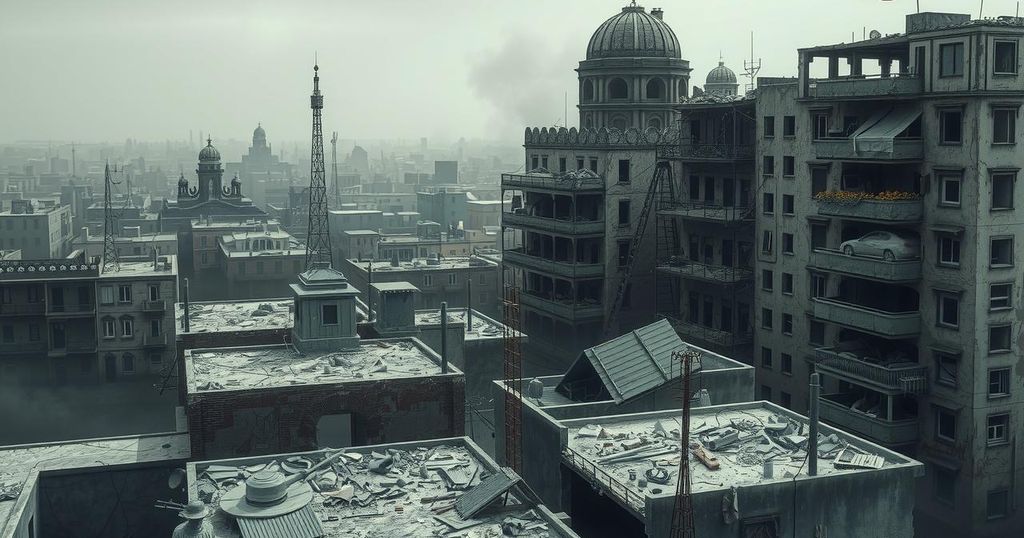Sudan’s Ongoing Conflict: A Comprehensive Overview of Two Years of War
Since April 2023, a civil war in Sudan has caused a severe humanitarian crisis, with 30 million civilians needing aid and over 14 million displaced. The conflict stems from a power struggle involving the Sudanese Armed Forces and the Rapid Support Forces, with external interference complicating peace efforts. Despite calls for civilian protection, peace talks have largely failed, leaving vulnerable populations at risk.
Sudan has been engulfed in a devastating civil war since April 15, 2023, triggered by a power struggle between the Sudanese Armed Forces and the paramilitary Rapid Support Forces. Fighting initially erupted in Khartoum and swiftly spread throughout the nation, leading to an ongoing humanitarian crisis with millions in need of aid. International efforts for peace have largely been unsuccessful, exacerbating the situation.
The conflict has created one of the worst humanitarian emergencies, with approximately 30 million civilians requiring assistance. Increasing occurrences of attacks, looting, and infrastructure destruction have left many without essential medical care, worsening food shortages and contributing to economic collapse across the nation.
A displacement crisis has also emerged, forcing over 14 million individuals to flee their homes, either to neighboring countries for refuge or remaining trapped under perilous conditions within Sudan. The toll on the population is severe; casualty estimates range from 20,000 to 62,000, and the real number may be substantially higher.
Both the Sudanese army and the Rapid Support Forces are significantly armed, with an overflow of firearms pervading the country. While the army possesses superior air power and heavy ground assets, the paramilitary focuses on agile units armed with lighter weaponry, allowing both forces to endure a protracted conflict.
The influx of weapons has been aggravated by military and financial backing from various foreign actors, including Chad, Egypt, Iran, Libya, Qatar, and Russia. The United Arab Emirates and Saudi Arabia have played particularly troubling roles, with both nations financing different factions and exacerbating competition within Sudan’s military hierarchy.
International interference has destabilized regional dynamics, as evidenced by accusations from the Sudanese army against the UAE for supplying arms to the Rapid Support Forces. The unpredictable situation raises concerns about potential conflict spillover across the unstable borders of Sudan, which includes several neighboring countries like Chad and South Sudan.
The ongoing conflict has resulted in millions of civilians being caught in the crossfire. There has been an urgent call from the United Nations for an independent force to protect civilians, yet Sudanese authorities have rejected these recommendations. The lack of a secure peacekeeping presence since early 2024 has left vulnerable populations without adequate protection against ongoing violence.
Despite multiple high-level peace negotiations facilitated by the African Union and the United Nations, efforts to establish a lasting ceasefire have repeatedly failed. External interests of the negotiating countries have compromised their impartiality, hindering the prospects for achieving peace. Without a significant decline in military support for the conflicting parties, the humanitarian crisis for civilians will continue to intensify.
The ongoing conflict in Sudan represents one of the most severe humanitarian disasters in recent history, fueled by power struggles, armed conflict, and external interference. With millions in need of urgent assistance and a growing displacement crisis, the international community must reconsider its approach to mediation and support for conflict resolution. Ensuring civilian protection and peacekeeping will be crucial for paving the road to stability in Sudan.
Original Source: www.inkl.com








Post Comment